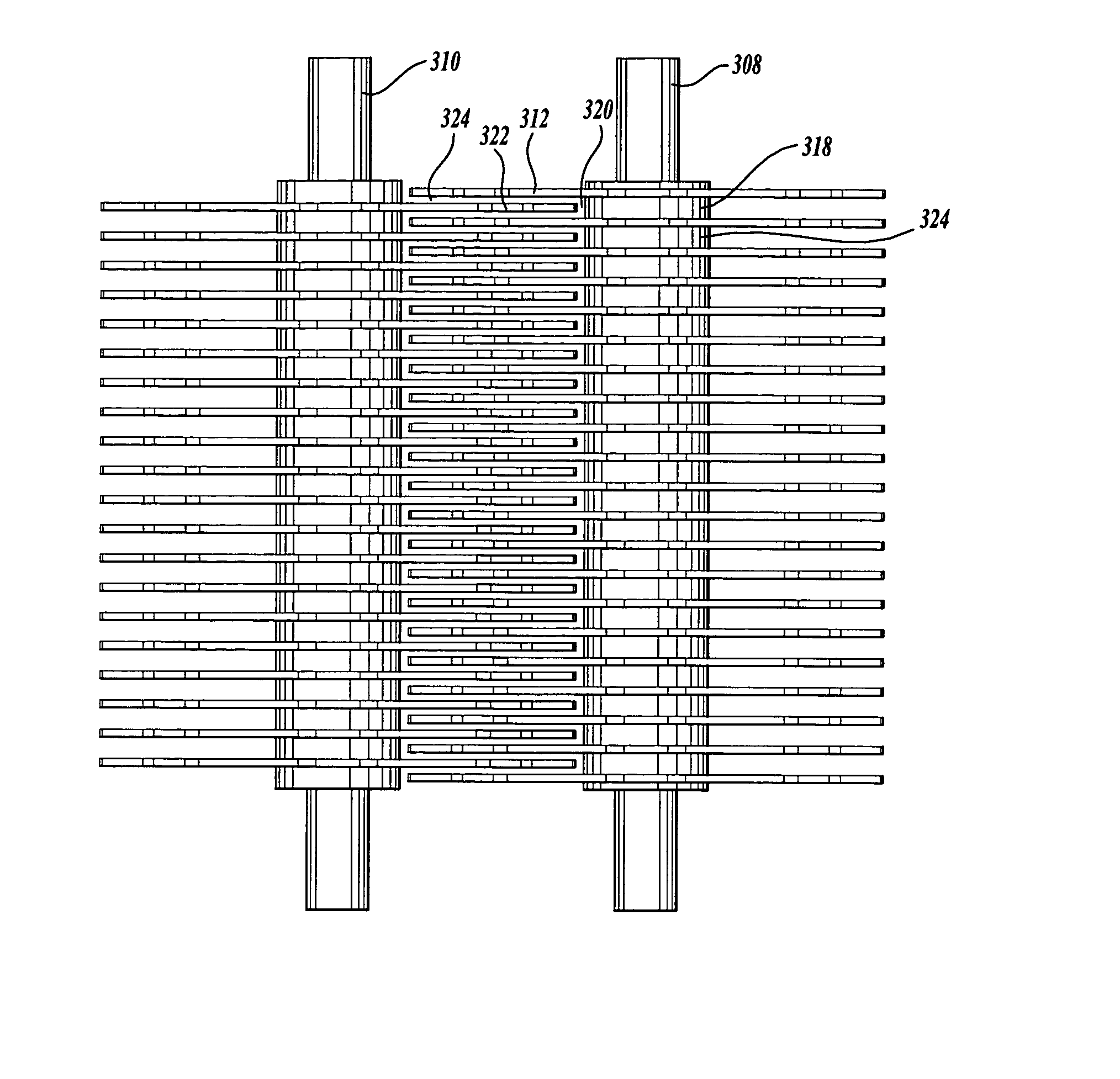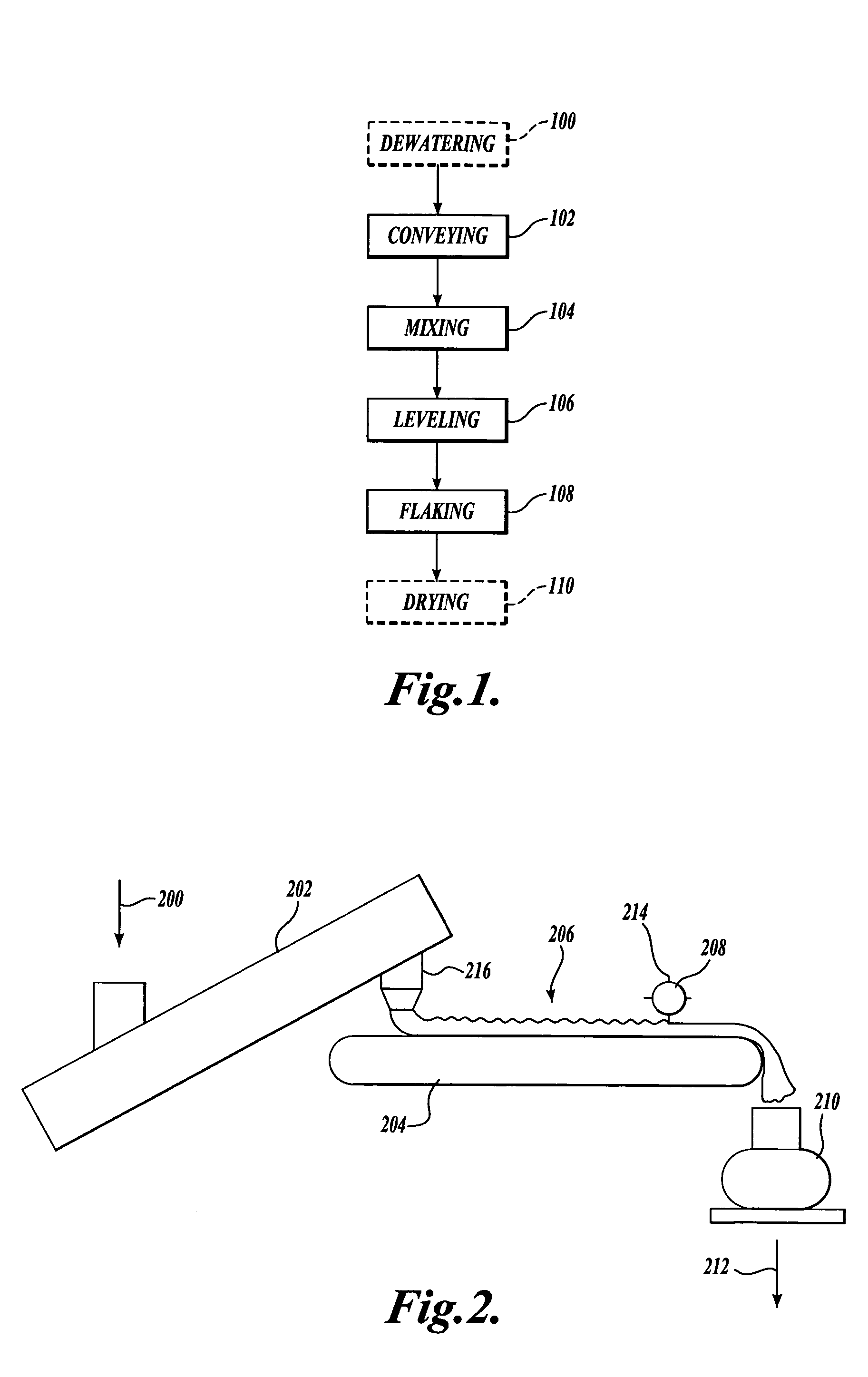Pulp flaker
a technology of pulp flaker and pulp, which is applied in the field of pulp flaker, can solve the problems of pulp having a sinusoidal profile, achieve the effects of reducing the size of the pulp, preventing the scattering of pulp, and ensuring the uniformity of the mass flow of pulp
- Summary
- Abstract
- Description
- Claims
- Application Information
AI Technical Summary
Benefits of technology
Problems solved by technology
Method used
Image
Examples
Embodiment Construction
[0019]Referring to FIG. 1, the present invention is related to methods for conveying 102, mixing 104, leveling 106, and flaking 108, dewatered pulp into pulp flakes of uniform small size and moisture content to improve the operation of a dryer. In the '143 application referred to above, an airlock was used immediately prior to a jet dryer. The airlock proved unsatisfactory. “Jet drier” as used herein means any dryer that accelerates air into a loop conduit enabling the simultaneous drying and singulation of a substance flowing through the conduit. Reference is made to the '143 application for a fuller description of jet dryers and their operation. FIG. 1 of the '143 application (provided as FIG. 8 herein) shows a shaftless screw conveyor 40, followed by an airlock 60 which then feeds pulp into the jet dryer 20. According to one embodiment of the present invention, in place of the airlock 60, a belt conveyor with a leveling apparatus and a pulp flaker are substituted for the airlock ...
PUM
| Property | Measurement | Unit |
|---|---|---|
| length | aaaaa | aaaaa |
| distance | aaaaa | aaaaa |
| distances | aaaaa | aaaaa |
Abstract
Description
Claims
Application Information
 Login to View More
Login to View More - R&D
- Intellectual Property
- Life Sciences
- Materials
- Tech Scout
- Unparalleled Data Quality
- Higher Quality Content
- 60% Fewer Hallucinations
Browse by: Latest US Patents, China's latest patents, Technical Efficacy Thesaurus, Application Domain, Technology Topic, Popular Technical Reports.
© 2025 PatSnap. All rights reserved.Legal|Privacy policy|Modern Slavery Act Transparency Statement|Sitemap|About US| Contact US: help@patsnap.com



